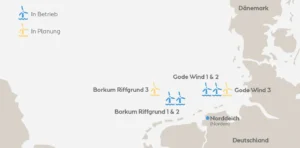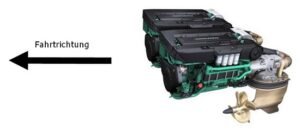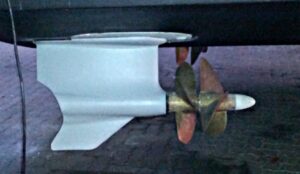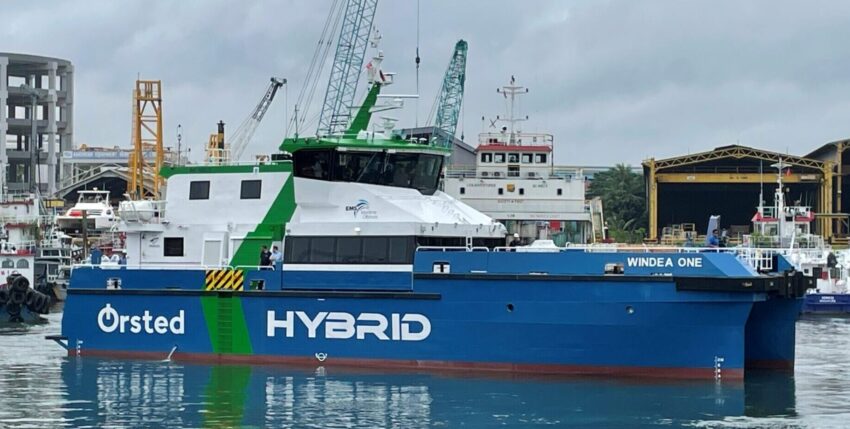
In June 2023, EMS Maritime Offshore GmbH (EMO) from Emden christened its latest ship, the WINDEA ONE, as the first parallel hybrid crew transfer vessel (CTV). In future, it will transport personnel and materials from Norden-Norddeich to the Borkum Riffgrund and Gode Wind wind farms (off Norderney). The offshore wind turbines will be operated by the Danish company Ørsted, which has chartered the ship from EMO on a long-term basis.
International co-operation
The ship was built by the Penguin Shipyard Group in Batam, Indonesia, under the name WindFlex-32 and is based on a design by Australian engineering firm Incat-Crowther. It is the fifth ship that the AG EMS Group, to which EMO also belongs, has commissioned.

Ship data
Four Volvo Penta engines with a total of 2,060 kW are installed over a length of 31.80 metres and a width of 10 metres (transfer operation). Two electric motors, each with an output of 180 kW, are connected to the gearboxes and run on batteries for low-speed operation (5 knots).
With a speed of up to 28 knots, the WINDEA ONE is operated by three crew members and can transport up to 24 people between the mainland and the wind turbines in the North Sea.

Special equipment
The WINDEA ONE is the first CTV in the world to utilise Volvo Penta's new parallel hybrid system together with the IPS (Inboard Performance System) drive. The characteristic feature of the IPS (pod) drive is the counter-rotating towing propellers, which are aligned forwards in the direction of travel, generate a horizontal thrust and are mounted so that they can rotate (rudder propeller principle).
WINDEA ONE has a hydraulic crane for loads of up to 50 tonnes and two slots for 20-foot containers. Incat-Crowther's patented Resilient Bow technology increases stability when mooring the boat to the landing points of the wind turbine by means of an active, self-adjusting fender system.
Environment
The hybrid ship complies with the current IMO Stage III for the reduction of nitrogen oxide and sulphur oxide emissions. It can be operated fully electrically for up to six hours and can also run on biofuel or, in future, on e-fuels to further reduce emissions.
Source: gCaptain, EMS AG, Ørsted, Volvo Penta










